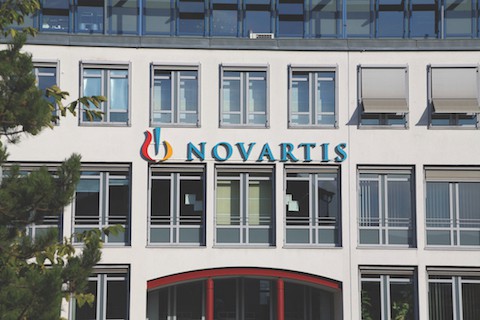
Novartis has reported phase 1/2 trial results with its intrathecal formulation of gene therapy Zolgensma, placed under a clinical hold by the FDA last year, backing up its safety and efficacy.
Zolgensma is approved as a single intravenous dose to treat genetic neuromuscular disorder spinal muscular atrophy (SMA) in pre-symptomatic young children – from newborns to two-year-olds – at a cost of $2.1m per one-shot treatment.
The approved version can be used in children with all types of SMA, but Novartis’ AveXis’ unit is trialling intrathecal administration – injection directly into the spinal canal – to try to expand its use into older children (aged two to five) with SMA type 2.
Last October, those plans were disrupted when the FDA placed a partial clinical hold on the phase 1/2 trial – called STRONG – after potential toxicity was seen in animal studies. Preliminary safety and efficacy data from the trial were reported earlier in the same month.
Specifically, the concern centred on inflammation in dorsal root ganglion (DRG) cells in the spinal nerve, and the hold was placed on patients scheduled to receive the highest dose of the gene therapy, with Zolgensma continuing to be given to those on lower doses.
Novartis now says new results from STRONG are in, with no new safety signals or patient deaths, and ‘remarkable’ efficacy in older children with SMA type 2 over 12 months that could lead to regulatory filings.
The IV route works best for SMA type 1, the most severe form of the disease which affects infants, as systemic infusion allows the gene therapy to spread around the body.
For milder forms of the disease that occur later in life – SMA types 2 and 3 – AveXis has been investigating intrathecal dosing as it delivers the gene therapy where it is needed most.
Intrathecal dosing also avoids systemic exposure – reducing the risk of off-target effects – and also uses less drug material so could be cheaper.
The new intrathecal data comes from the middle ‘B’ cohort in STRONG, who received 1.2 x 1014 vg of Zolgensma, twice the dose level of cohort A (6.0 x 1013 vg) and half the on-hold cohort C (2.4 x 1014 vg).
Patients on average saw a 6.0-point improvement on the Hammersmith Functional Motor Scale-Expanded (HFMSE) scale, which Novartis said is twice the increase deemed to be a clinically meaningful improvement in physical ability.
All told, 92% of patients achieved a 3.0 or greater improvement, meaning that the children saw significant improvements on activities like trunk control when rolling and sitting, and transitioning from lying to sitting.
Enrolled patients carry three copies of the SMN2 gene — a higher number of copies is associated with reduced SMA severity — and were able to sit, but not stand or walk at the time they started the study.
Data from untreated cases suggest children with this profile would have seen steady declines in motor function over a year’s follow-up.
AveXis says it provided data showing it received no clinical reports of ‘sensory neuronopathy’ – which could result from DRG inflammation – in 335 patients following intravenous or intrathecal treatment with Zolgensma to the FDA.
The agency is expected to respond in the second quarter of this year about the status of the clinical hold.




